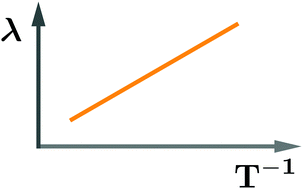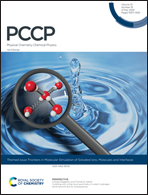Electron transfer in nonpolar media†
Abstract
The Marcus theory of electron transfer views fluctuating orientations of permanent dipoles as the nuclear mode bringing the donor and acceptor into the tunneling resonance. Electronic polarization of the solvent is excluded as the fast mode adiabatically following the electronic density. This view, valid for solids, does not apply to molecular liquids where molecular translations (density fluctuations) modulate the induction interaction of the donor–acceptor complex with the solvent. This mechanism of promoting radiationless electronic transitions is considered here in the framework of the perturbation liquid-state theory. The reorganization energy of electron transfer in nonpolar solvents is nonzero and reaches the values of 0.1–0.3 eV for typical molecular sizes and solvents used in applications. The reorganization energy scales quadratically with the molecular polarizability of the solvent and decays as the inverse fifth power with the size of the donor and acceptor. The combination of the entropic character of the density fluctuations, driven by re-packing of molecular cores, with the short range of induction solute–solvent interactions leads to the violation of the fluctuation–dissipation theorem for the variance of the donor–acceptor energy gap. An explicit, approximately hyperbolic, dependence of the reorganization energy on temperature is predicted. It leads to a non-Arrhenius kinetic law for the rate constant of electron transfer in nonpolar liquid solvents.

- This article is part of the themed collection: Frontiers in Molecular Simulation of Solvated Ions, Molecules and Interfaces


 Please wait while we load your content...
Please wait while we load your content...
